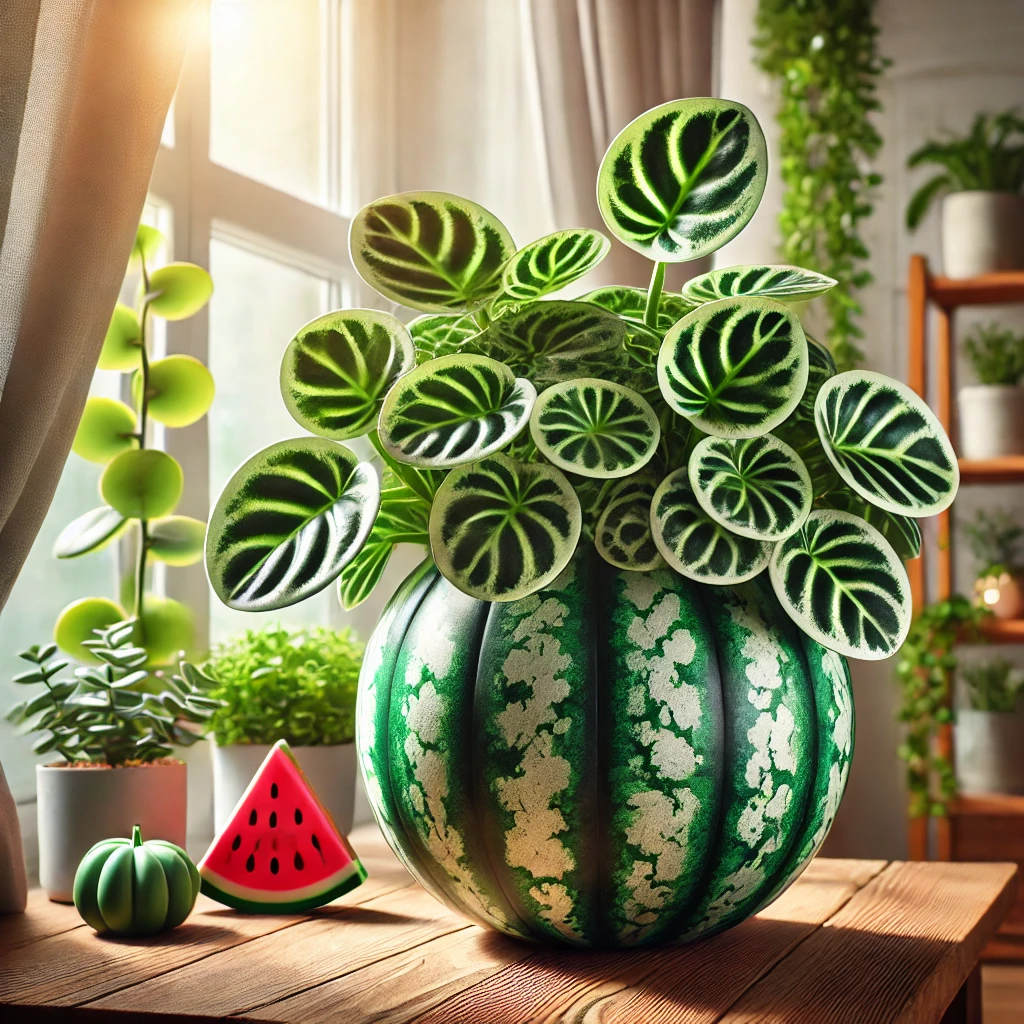If you’re searching for a low-maintenance yet striking houseplant to add to your collection, the Watermelon Peperomia (Peperomia argyreia) is an excellent choice. Named after its unique leaves that mimic the look of watermelon rinds, this tropical beauty is perfect for brightening up any indoor space. In this guide, we’ll cover everything you need to know about growing and caring for Watermelon Peperomia, ensuring your plant thrives year-round.
Why Choose Watermelon Peperomia?
Watermelon Peperomia has become a favorite among plant enthusiasts for its:
- Compact size, ideal for small spaces.
- Unique, eye-catching foliage with green and silver stripes.
- Low-maintenance nature, making it perfect for beginners.
Whether you’re a seasoned plant parent or new to houseplants, this tropical plant brings beauty and charm to your home without much effort.
How to Grow Watermelon Peperomia
1. Choosing the Right Spot
Watermelon Peperomia thrives in bright, indirect light. Direct sunlight can scorch its delicate leaves, while low-light conditions may cause the vibrant patterns to fade. A north- or east-facing window is ideal. If natural light is limited, consider using a grow light to keep your plant healthy.
2. Ideal Temperature and Humidity
This plant prefers temperatures between 65°F and 80°F (18°C–27°C) and enjoys a slightly humid environment. While it can adapt to typical indoor humidity, adding a small humidifier or placing a tray of water near the plant can be beneficial, especially in drier climates.
Caring for Watermelon Peperomia
1. Watering
Proper watering is key to keeping your Watermelon Peperomia happy. Follow these tips:
- Water when the top 1–2 inches of soil feel dry.
- Avoid overwatering, as soggy soil can lead to root rot.
- Use filtered or distilled water if your tap water is hard or heavily chlorinated.
A good rule of thumb is to err on the side of underwatering, as this plant’s semi-succulent leaves store moisture.
2. Soil and Potting
Watermelon Peperomia thrives in well-draining soil. A mix designed for succulents or a standard potting mix with added perlite or sand works perfectly. Ensure the pot has drainage holes to prevent water from pooling at the bottom.
3. Fertilization
Feed your plant monthly during the growing season (spring and summer) with a balanced liquid fertilizer diluted to half strength. Skip fertilizing in fall and winter when the plant enters its dormant phase.
4. Pruning and Maintenance
Regularly inspect your plant for yellowing leaves or dead stems. Trim them off with clean, sharp scissors to encourage new growth and keep your Peperomia looking tidy.
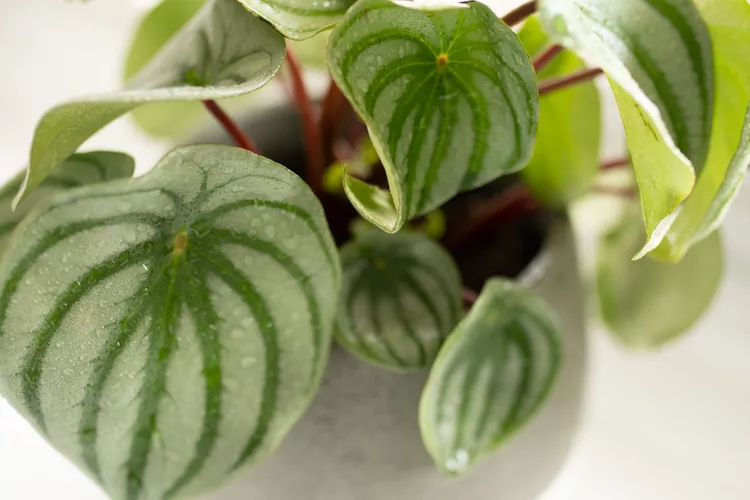
Propagating Watermelon Peperomia
Watermelon Peperomia is easy to propagate, making it a great plant to share with friends or expand your collection. Here’s how:
- Leaf Cutting Propagation:
- Use a healthy leaf with a short stem attached.
- Place the cutting in moist soil, ensuring the cut end is buried slightly.
- Cover the pot with a plastic bag to retain humidity, and keep it in bright, indirect light.
- Water Propagation:
- Place a leaf cutting in a glass of water, ensuring the stem is submerged.
- Change the water every few days to prevent stagnation.
- Once roots appear, transfer the cutting to soil.
Common Problems and Solutions
Even though Watermelon Peperomia is a low-maintenance plant, you might encounter a few challenges:
1. Yellowing Leaves
- Cause: Overwatering or poor drainage.
- Solution: Let the soil dry out before watering again. Check if the pot has adequate drainage holes.
2. Leggy Growth
- Cause: Insufficient light.
- Solution: Move the plant to a brighter location or supplement with a grow light.
3. Pests
- Common Pests: Mealybugs, spider mites, or fungus gnats.
- Solution: Use insecticidal soap or neem oil to treat infestations. Keep the plant area clean and free of debris.
Why Your Watermelon Peperomia Deserves Attention
With its stunning foliage and easy-care routine, Watermelon Peperomia is an excellent choice for anyone looking to elevate their indoor garden. It’s also pet-friendly, making it safe for households with cats and dogs.
Quick Care Tips for Watermelon Peperomia
| Aspect | Details |
|---|---|
| Light | Bright, indirect light |
| Water | Allow the topsoil to dry before watering |
| Soil | Well-draining, light soil |
| Humidity | Moderate to high humidity |
| Temperature | 65°F–80°F (18°C–27°C) |
| Fertilizer | Monthly during spring and summer |
Conclusion
Caring for a Watermelon Peperomia is straightforward and rewarding. By providing the right light, water, and soil conditions, you can enjoy its beautiful foliage year-round. This plant is not only a statement piece but also a stress-free addition to your home.
Do you already own a Watermelon Peperomia? Share your care tips or challenges in the comments below!

